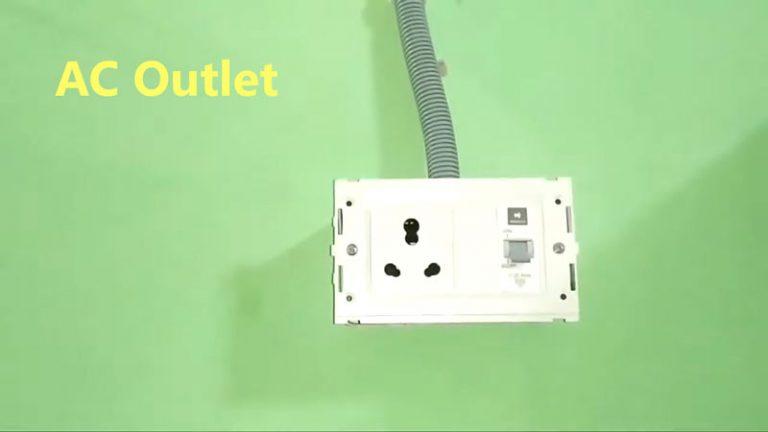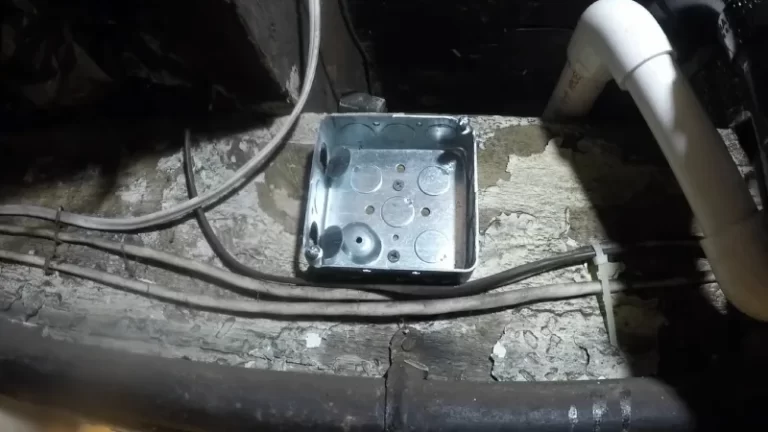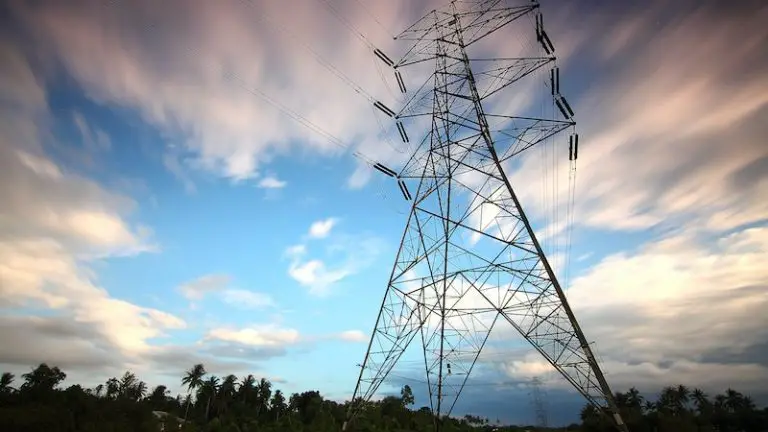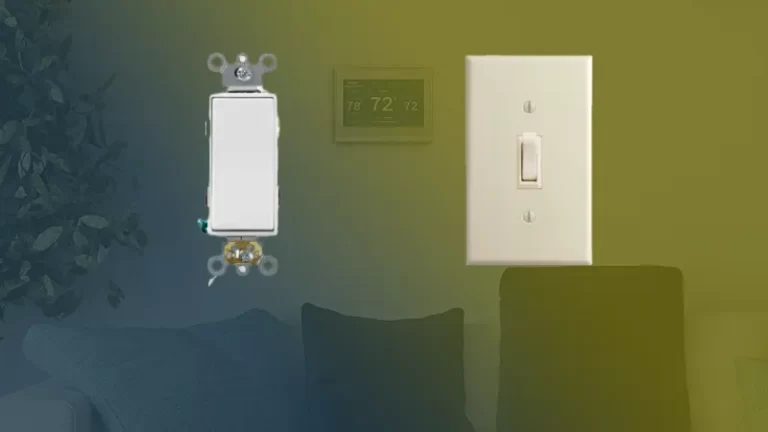Amperage Loss Over Distance [Reasons, Calculation, Solutions]

Amperage, also known as electrical current, is a measure of the flow of electric charge through a conductor. It is a key factor in the design and operation of electrical circuits, as it determines the amount of electrical power that can be transmitted through a conductor. Proper amperage is important for several reasons:
- Safety: Amperage must be within the safe limits of the conductor to prevent overheating and potential electrical fires.
- Performance: Electrical devices and appliances are designed to operate at specific amperage levels. If the amperage is too low, the device may not function properly. If the amperage is too high, it could damage the device or cause it to malfunction.
- Energy efficiency: Excess amperage can result in wasted energy, as it can create heat and cause the conductor to become less efficient at transmitting electricity.
It is important to carefully consider amperage when designing and installing electrical circuits to ensure that they are safe, efficient, and able to meet the needs of the devices and appliances that will be connected to them.
You'll Learn About
Factors That Affect Amperage Loss Over Distance
There are several factors that can affect the amount of amperage loss over a distance in an electrical circuit. These include:
Resistance Of The Conductor
The resistance of a conductor is a measure of its ability to oppose the flow of electric current. The higher the resistance of a conductor, the greater the amperage loss will be over a given distance. Conductors with lower resistance, such as copper, tend to have less amperage loss than those with higher resistance, such as aluminum.
Temperature Of The Conductor
The temperature of a conductor can affect its resistance and, in turn, the amperage loss. As the temperature of a conductor increases, its resistance also increases, leading to higher amperage loss.
Length of the conductor: The longer the distance that an electrical current must travel through a conductor, the greater the amperage loss will be.
Load On The Circuit: The load on an electrical circuit, or the amount of electrical power being drawn by devices and appliances connected to the circuit, can affect the amperage loss. A higher load on a circuit can lead to higher amperage loss.
Understanding and considering these factors is important when designing and installing electrical circuits to minimize amperage loss and ensure the safe and efficient operation of the circuit.
How Much Current is Lost Over Distance?
Electricity losses over distance are not directly related to the current being transmitted. Instead, electricity losses occur due to resistance in the transmission lines (different from bus ducts). The resistance of a conductor is determined by the material it is made of and its cross-sectional area.
When electricity flows through a conductor, some of the energy is converted into heat due to the resistance of the conductor. The more resistance a conductor has, the more energy will be lost as heat.
The amount of energy lost due to resistance is proportional to the square of the current, the length of the conductor, and the resistance of the conductor. This means that if you double the current flowing through a conductor, the energy lost due to resistance will increase by a factor of four.
Similarly, if you double the length of a conductor, the energy lost due to resistance will also increase by a factor of four. The amount of current lost over distance is not a fixed value, but rather it depends on the resistance of the conductor and the length of the conductor.
How To Calculate Amperage Loss Over Distance
Ohm’s Law is a basic principle of electricity that states that the current flowing through a conductor is directly proportional to the voltage applied to it and inversely proportional to the resistance of the conductor. It can be used to calculate the amperage loss over a distance in an electrical circuit.
To calculate amperage loss using Ohm’s Law, you will need to know the resistance of the conductor, the length of the conductor, and the voltage applied to the circuit. The resistance of the conductor can be found using the following formula:
Resistance (Ω) = Resistivity (Ω-m) * Length (m) / Cross-sectional area (m^2)
Once you have calculated the resistance of the conductor, you can use Ohm’s Law to determine the amperage loss over a distance using the following formula:
Amperage loss (A) = Voltage (V) / Resistance (Ω)
It is important to use the appropriate size of conductor for your application to minimize amperage loss. Factors to consider when selecting a conductor size include the ambient temperature, the length of the run, and the load on the circuit. Consult the National Electrical Code (NEC) or a qualified electrician to determine the appropriate size of conductor for your specific application.
It is also important to note that the amperage loss calculations are based on the assumption of a resistive load. If the load on the circuit is reactive (such as an inductive load or a capacitive load), the amperage loss will be different and may require a more complex calculation.
Voltage Drop Calculation
Voltage drop is the decrease in voltage that occurs in an electrical circuit due to the resistance of the conductors and the load. It is important to calculate the voltage drop in a circuit to ensure that the voltage at the load is sufficient for the intended use and to avoid overloading the circuit.
To calculate voltage drop, you need to know the impedance of the conductor, the load current, and the length of the conductor. The impedance of the conductor is a measure of its resistance and is typically specified in ohms per 1,000 feet (or ohms/kft). The load current is the amount of current that will be flowing through the conductor, and the length is the distance between the power source and the load.
There are two different formulas for calculating voltage drop: one for single-phase systems and one for three-phase systems.

For a single-phase system, the voltage drop formula is:
Voltage Drop = 2 x Z x I x L / 1000
For a three-phase system, the voltage drop formula is:
Voltage Drop = 1.73 x Z x I x L / 1000
To use these formulas, you simply plug in the values for Z, I, and L and solve for V Drop.
For example, let’s say you have a single-phase system with a load current of 50 amperes, a conductor length of 100 feet, and an impedance of 0.2 ohms/kft. The voltage drop, in this case, would be:
V Drop = 2 x 0.2 x 50 x 100 / 1000 = 2 volts
This means that the voltage at the load would be 2 volts lower than the voltage at the power source.
It is important to note that these formulas assume a uniform voltage drop along the length of the conductor. In practice, the voltage drop may not be uniform due to factors such as the resistance of the load and any other electrical devices in the circuit.
You can easily calculate voltage drop here.
Tips For Minimizing Amperage Loss
There are several steps that you can take to minimize amperage loss in electrical circuits:
Use A Larger Gauge Conductor
Increasing the size (gauge) of the conductor can reduce the resistance of the conductor and minimize amperage loss. However, it is important to consider the maximum current that the conductor will need to carry and select a conductor size that is appropriate for your application.
Use Conductor Materials With Lower Resistance
Materials such as copper tend to have lower resistance than other materials, such as aluminum. Using a conductor material with lower resistance can help to reduce amperage loss over a distance.
Proper Installation Techniques
Proper installation techniques can also help to minimize amperage loss. For example, properly spacing conductors can reduce the amount of heat generated by the conductor, which can in turn reduce resistance and minimize amperage loss. Using a conduit to enclose the conductor can also help to protect it from environmental factors that can increase its resistance, such as moisture or high temperatures.
By following these tips, you can help to ensure that your electrical circuits are efficient and able to transmit electrical power with minimal loss.
Minimizing Amperage Loss
Here are some additional tips for minimizing amperage loss in electrical circuits:
Use Thicker Conductor Wire
Increasing the thickness of the conductor wire can reduce its resistance and minimize amperage loss. However, it is important to consider the size and weight of the conductor, as well as the cost and availability of different sizes.
Use Multiple Parallel Conductors
Instead of using a single conductor to transmit electrical power over a long distance, you can use multiple parallel conductors. This can help to reduce the resistance and minimize amperage loss, as the current can be distributed across multiple conductors rather than flowing through a single one.
Use A Voltage Booster
A voltage booster is a device that increases the voltage of an electrical circuit to compensate for voltage drops. By using a voltage booster, you can maintain a higher voltage at the load, which can help to reduce amperage loss and improve the performance of electrical devices and appliances.
Use A Power Conditioner
A power conditioner is a device that helps to stabilize the voltage and current of an electrical circuit. By using a power conditioner, you can reduce the fluctuation in voltage and current, which can help to minimize amperage loss and improve the performance of electrical devices and appliances.
Upgrade To A Higher Voltage System
If you are experiencing significant amperage loss over a long distance, you may want to consider upgrading to a higher-voltage system. Higher voltage systems have lower resistance and can transmit electrical power more efficiently over long distances.
By following these tips, you can help to minimize amperage loss and ensure that your electrical circuits are safe, efficient, and able to meet the needs of your devices and appliances.
Ways to Reduce the Energy Loss Due to Resistance Over Distance
There are a few ways to reduce energy loss due to resistance over distance in a conductor:
- Use a conductor with a lower resistance: Materials such as copper and aluminum have lower resistances compared to other materials, so using these materials for transmission lines can help reduce energy loss.
- Increase the cross-sectional area of the conductor: By increasing the cross-sectional area of the conductor, you can decrease the resistance per unit length. This will reduce the energy loss due to resistance.
- Use higher voltage for transmission: By using a higher voltage for transmission, you can transmit the same amount of power using a smaller current. Since the energy loss due to resistance is proportional to the square of the current, using a smaller current will reduce the energy loss.
- Use more efficient transmission technologies: There are several technologies available that can help reduce energy loss in transmission lines. For example, superconducting transmission lines can transmit electricity with almost zero resistance, resulting in minimal energy loss.
- Improve transmission line design: Properly designing transmission lines can also help reduce energy loss. This includes choosing the right route for the transmission line to minimize the length and selecting the right conductor size to minimize resistance.
Editor’s Note
It is generally recommended to size your wire based on the maximum current that you expect to flow through it, rather than the distance of the run. The voltage drop across a conductor is directly proportional to the current flowing through it and the resistance of the conductor. The resistance of a conductor is largely determined by its size (gauge), material, and temperature.
In your case, if you are planning to run a 20-amp circuit and you expect to draw a maximum of 19 amps of current, then you will need to use a conductor that is rated for at least 20 amps. A #10 copper wire is rated for 30 amps, so it should be sufficient for your needs. A #8 copper wire is rated for 40 amps, so it would also be suitable for your application.
If you are planning to run two 20-amp circuits, then you will need to use a conductor that is rated for at least 40 amps. In this case, you would need to use a #8 copper wire or a larger gauge wire.
It is important to note that the ampacity of a conductor is based on the ambient temperature and the installation conditions. If the conductor is installed in a place where it is subjected to high temperatures (such as in a ceiling or attic), then its ampacity may be reduced.
It is always a good idea to consult the National Electrical Code (NEC) or a qualified electrician to determine the appropriate size of conductor for your specific application. Never splice wires inside walls.
Final Words
Amperage loss is an important consideration when designing and installing electrical circuits. Proper amperage is essential for the safety, performance, and efficiency of the circuit. You should use the correct electrical panels.
There are several factors that can affect amperage loss, including the resistance of the conductor, the temperature of the conductor, the length of the conductor, and the load on the circuit. By using Ohm’s Law and considering these factors, you can calculate the amperage loss over a distance and take steps to minimize it.
Minimizing amperage loss can have several benefits, including improved performance of electrical devices and appliances, reduced risk of electrical fires, and increased energy efficiency. By following best practices for conductor selection and installation, you can help to ensure that your electrical circuits are safe, efficient, and able to meet the needs of your devices and appliances.






